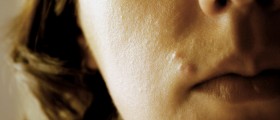Introduction
Acne is one of the most common medical conditions and it affects a large number of people everywhere around the world. Everyone who has acne is usually not very happy about those pimples and red bumps on their facial skin. Fortunately enough, there are numerous different methods of treatment for all those unfortunate people who suffer from this annoying medical condition. Most people who suffer from acne usually rely on a vast array of home remedies. Some others opt to use certain types of antibiotics which are a much stronger method of treatment and they provide a much faster recovery. The problem with antibiotics is that they may be associated with certain types of side effects. It is always better to use natural remedies, but sometimes they are not efficient enough, so severe cases of acne need to be treated with a course of antibiotics. One of the most commonly used types of antibiotics for acne is called tetracycline.
Tetracycline for Acne Treatment
Tetracycline is a certain type of prescription antibiotic which is commonly used for the reduction of symptoms of acne. Those who suffer from mild cases of acne should not use this medication because it is rather powerful. It is much more suited for those who suffer from severe cases of acne. Some cases may involve the occurrence of certain side effects triggered by tetracycline, but they are usually mild and easy to tolerate. Sometimes the medication needs to be accompanied by benzoyl peroxide. Tetracycline is very efficient in diminishing the amount of propionibacterium acnes in the human body. It is a certain type of bacteria which can be commonly found in the skin pores and it can be held responsible for the occurrence of acne. When the number of these bacteria gets reduced, the amount of manifestations of acne gets reduced as well and the healing process starts shortly after that. Tetracycline is very efficient in reducing the existence of pimples and the redness of the skin. Tetracycline has a very powerful effect on the function of the lymphocytes. One should always take tetracycline according to the dosage prescribed by the doctor. It is usually taken on an empty stomach, before the meal. It should not be taken with antacids or milk. The treatment may last for as long as the doctor thinks it’s obligatory. The dosage is usually gradually reduced over time. Possible side effects may include hemolytic anemia, renal toxicity, enterocolitis, gastric intestinal problems, headaches, allergies, liver problems and skin rash.

















Your thoughts on this
Loading...